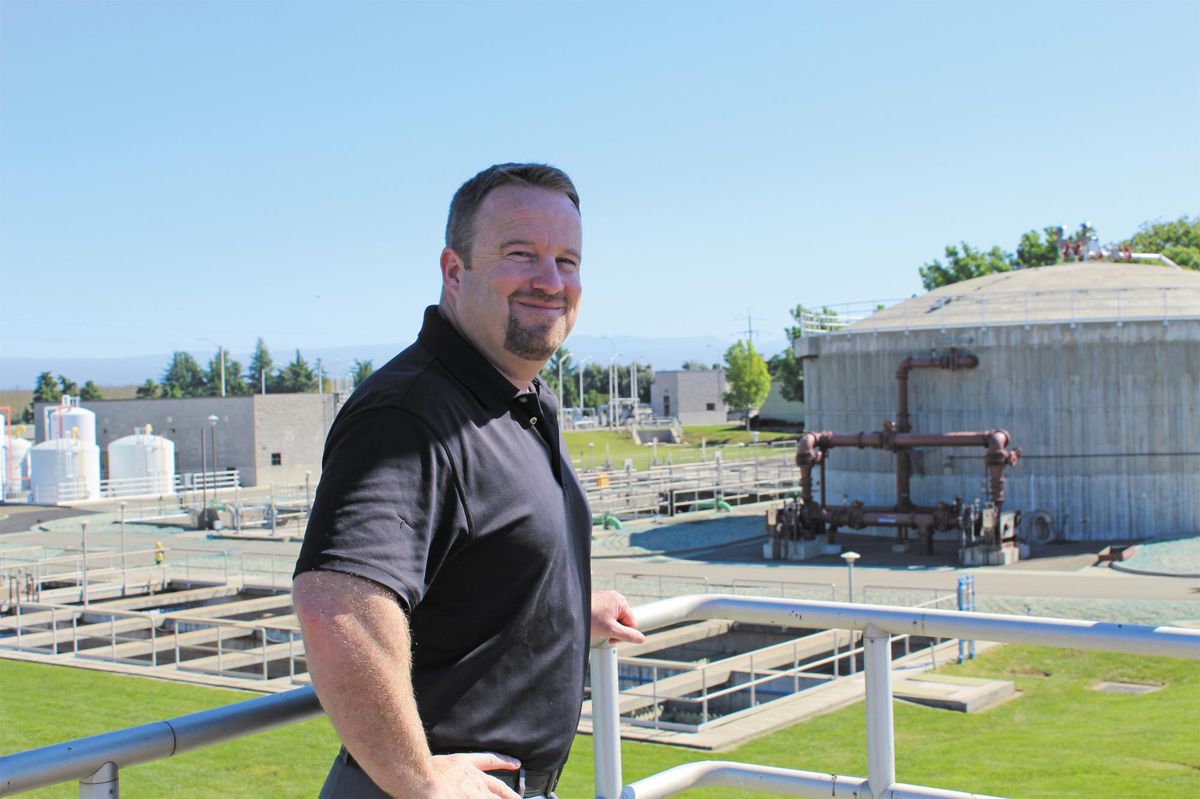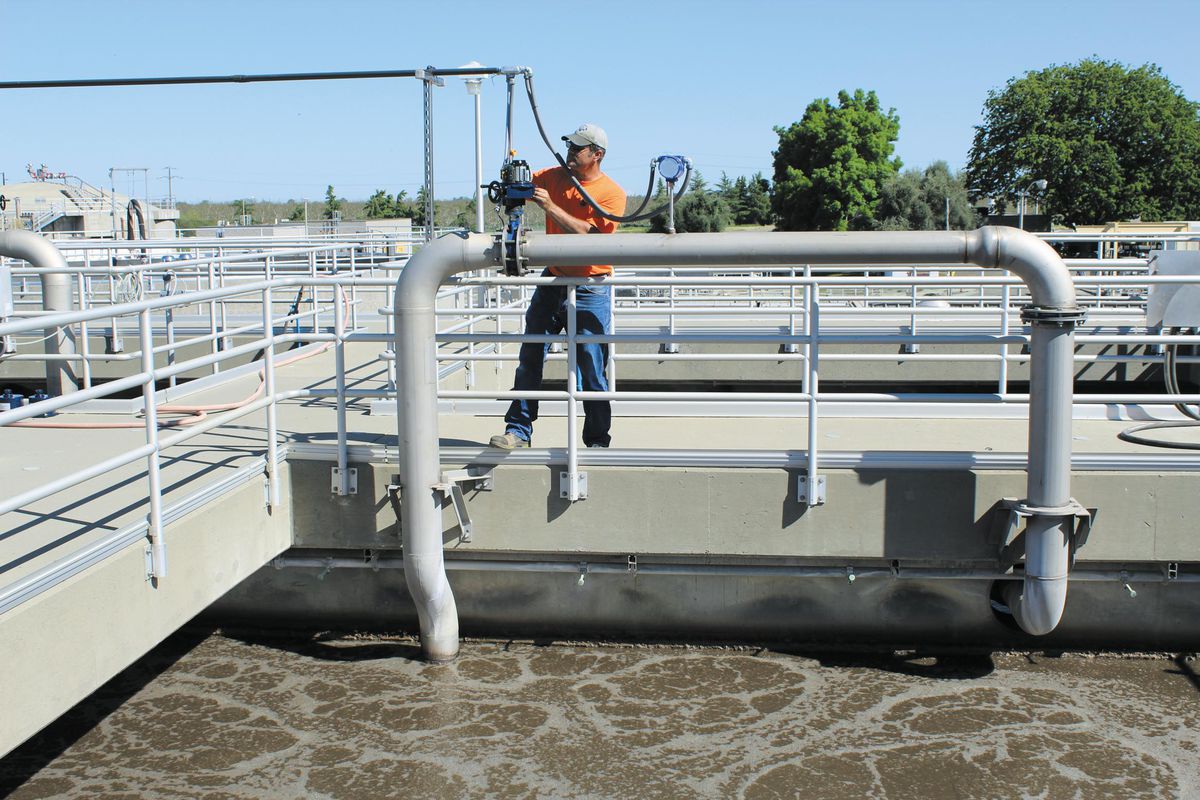
Photo by Ashiah Scharaga
The “replacement cycle is exploding” at the wastewater treatment plant post-Camp Fire, according to Erik Gustafson, public works director of operations and maintenance.
As Travis Elliott walked around the Chico Water Pollution Control Plant on a recent morning, he pointed to one of the facility’s three sedimentation tanks (where waste settles as part of the water-purifying process), which was empty and in need of repair. It’ll be out of service temporarily, “until we can catch up” on maintenance, Elliott, the plant’s lead operator, told the CN&R. “Normally, we’d repair that right away.”
Moments later, Erik Gustafson, city public works director of operations and maintenance, climbed a ladder to peer into the bed of a massive truck that can hold 24 tons of biosolids, which are taken to a compost facility. Instead of filling it every two days as was the norm a year ago, he said, the plant has been processing enough waste to fill it nearly every day.
Those are just two examples of changes the plant has seen since Nov. 8. As people from the Ridge and other burn-scarred areas settled in Chico, the average daily flow passing through the facility—from sinks and toilets across the city—began to climb. City staff compared average daily flows from November through January with the same months the year prior and discovered they have increased dramatically: 16 percent, from about 5.98 million gallons to 6.94 million gallons per day.
That amount of growth is what the city expected to see “over several decades”—not overnight, Gustafson said.
While the treatment plant has enough capacity to handle the influx—the facility can process up to 12 million gallons each day—it is creating issues for the plant’s budget. It’s increasing the staff’s workload and the demand for supplies (such as the chemicals to treat the biosolids), electricity and maintenance.

Photo by Ashiah Scharaga
Raul Baca, the plant’s lone electrical and environmental supervisor, says he’s been making more frequent repairs since the fire, and other projects have been put on hold to meet the increased demand.
A case in point: The plant’s small staff of 10—operators, waste inspectors, lab technicians and an electrician—has been slammed. The facility has to be monitored 24/7, and with a more intensive workload and no extra bodies (in fact, the city has had trouble recruiting for three vacant positions), staff has been using a rotating mandatory overtime schedule, Elliott said. Noncritical maintenance has been deferred for the time being, he added.
For now, added costs have been absorbed into the operations budget, but that is “not sustainable,” Gustafson said. The facility already needed infrastructure upgrades. There are some wastewater pipes in Chico, for example, that are almost 100 years old.
In 2008, the city took out a state loan to expand the plant’s capacity. The idea at the time was that plenty of development was on the way and sewer connection fees would help pay off the loan.
Then the recession hit. Since then, the plant’s operating budget largely has been covering those loan payments, rather than necessary upgrades, Gustafson said.
Before the fire, the city hired a consultant to analyze the condition of the facility, Gustafson said, which should determine whether a rate increase may be necessary to address its needs. Whether the post-fire capacity will be considered is uncertain, because there’s no way to tell how long the increased demand will last, Gustafson said.
“The issue we’re wrestling with is a bulk of this flow is from people doubling up in households,” Gustafson said. “We don’t have the added monthly sewer fees to compensate for the increase.”
Any fee increases would have to be approved by the City Council, California Public Utilities Commission and, ultimately, ratepayers. But Gustafson said it’s safe to assume that a 16 percent increase in flows represents a 16 percent increase in cost—which translates to nearly half a million dollars ($497,451).
“Long-term, if this is sustained, we’re going to have to raise rates,” Gustafson said. Currently, the fee is set at $22.98 per month per household.
The analysis will be completed later this year, and Gustafson anticipates bringing the results to the council in the fall. Until then, city staff will continue to operate on a leaner model—deferring noncritical maintenance, keeping certain facilities off-line and working those longer hours.
